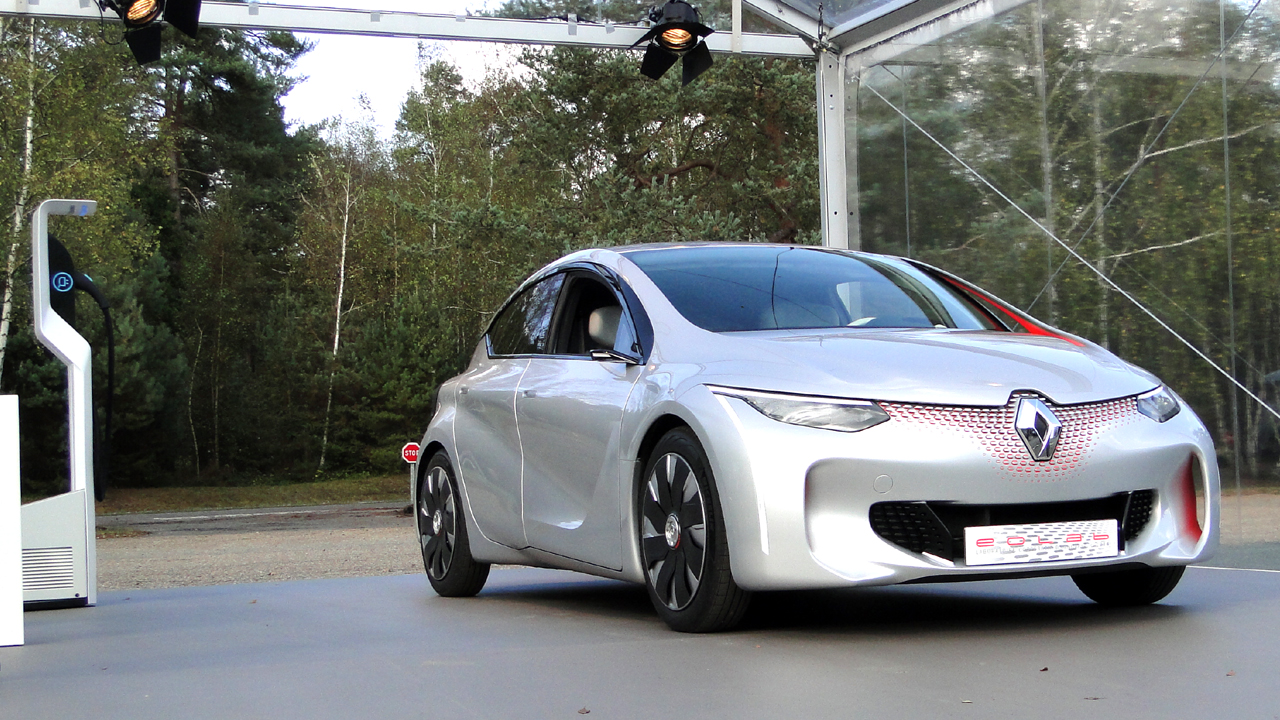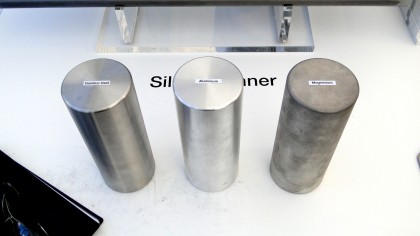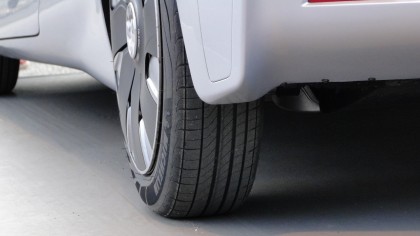Driving Renault's incredible 282mpg Eolab
The future of motoring or temporary tax dodge on four wheels?

Over the last five years, big gains in fuel efficiency from seemingly every new car have become routine. But even in that context, Renault's spectacular 282mpg claim for its new Eolab prototype is extraordinary.
So, how has Renault pulled this off, and does it provide a glimpse of the future of motoring or there something else going on?
The first thing to understand about the Eolab is that it's a pure prototype, not a pre-production version of a future model. However, Renault reckons most of the Eolab's innovations – and there are lots, Renault claims it has created no fewer than 100 new technologies – could appear in Renaults you can buy as soon as 2020.
The Eolab, then, is Renault's vision of what an uber-efficient hatchback (it's roughly the same same as a Renault Clio) could look like by 2020.
Light fantastic
As for the technicalities, the Eolab's insane efficiency basically boils down to three key areas – weight savings, aero optimisations and then the power source.
Right away you're probably thinking the Eolab will be pure carbon fibre, right? We were. After all, that's the space-age material du jour for making lighter cars. But remember that bit about putting most of the Eolab into production by 2020?
Making a carbon-fibre Clio simply wouldn't be cost effective. Or rather the resulting Clio would be far more expensive than its competitors. Instead, Renault has gone for a mix of metals, ncluding advanced steels, aluminium and magnesium, and thermoplastics.
Get daily insight, inspiration and deals in your inbox
Sign up for breaking news, reviews, opinion, top tech deals, and more.

Next, Renault went through each and every component, pressing and panel, taking out unecessary weight. The result is a sub-1,000kg Clio-sized car.
That good but perhaps not great. But here's the thing. The Eolab has both a combustion engine and a battery-electric hybrid package, complete with a substantial 6.7kWh lithium-ion battery pack and features like brake-energy regeneration and plug-in chargeability.
Renault says that had the Eolab simply been fitted with a conventional combustion engine, it would be fully 400kg lighter than a Clio. Even with the hybrid gubbins, it's 250kg lighter. Hold that thought, it will be important later.
It's all about the aero
After lightness, then, comes aerodynamics. For the Eolab, this takes many forms from the overall shape of the car (it's lower than a contemporary hatchback, nearly all of which have grown very tall), to details like super slim tyres and slippery bullet-shaped cameras instead of slab-sized wing mirrors and finally active elements.
The latter includes an active front spoiler, active ride height and active flaps in the rear. Put everything together and you get an overall drag coefficient of 0.235Cd, which is jolly low. Stop us if our analysis is getting too technical.

In all seriousness, it wasn't all that long ago that anything below 0.30Cd was a bit special. For the record, this doesn't make the Eolab more slippery than any production car. Mercedes has managed 0.22Cd for the BlueEfficiency version of its CLA compact saloon. But for a hatchback, which is inherently not a terribly aero-efficient shape. It's pretty exceptional.
Petrol-electric power
The last part of the puzzle is the petrol-electric powertrain. For starters, there's a conventional three-cylinder 999cc petrol engine good for 78bhp. Add to that a 40kW electric motor powered by that 6.7kWh lithium pack we mentioned earlier.
The whole thing goes through a surprising simple three-speed clutchless transmission. In an age where gearboxes sprout extra ratios seemingly by the week (we were up to nine-speed auto boxes the last time we checked), this may seem retrograde.

But with the electric power assist ensuring plenty of torque, it actually makes sense. And a simpler, smaller gearbox is both lighter and cheaper. It's win, win, win.
As for performance, we're talking nine seconds to 62mph and 125mph all out. Again, that's in line with a normal Renault Clio.
Technology and cars. Increasingly the twain shall meet. Which is handy, because Jeremy (Twitter) is addicted to both. Long-time tech journalist, former editor of iCar magazine and incumbent car guru for T3 magazine, Jeremy reckons in-car technology is about to go thermonuclear. No, not exploding cars. That would be silly. And dangerous. But rather an explosive period of unprecedented innovation. Enjoy the ride.